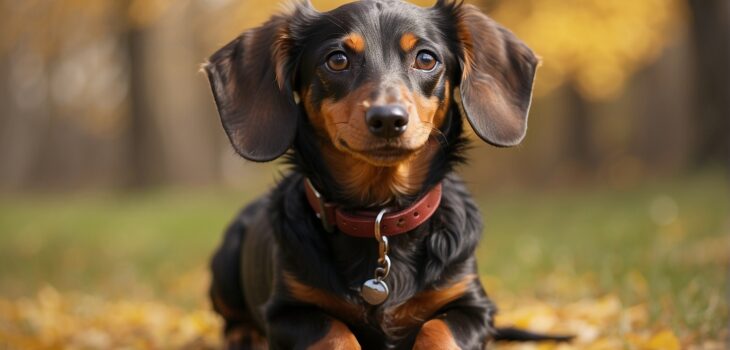Dachshunds, those adorable and playful little sausage dogs, may bring joy to our lives, but they are not immune to health concerns. Just like any other breed, these lovable canines have their fair share of common health issues that owners should be aware of. From back problems to dental issues, it is essential to understand the potential health risks that dachshunds may face, so you can provide the best care and ensure their well-being. Let’s take a closer look at some of the common health issues that dachshunds may experience throughout their lives.
Obesity
Causes of obesity in Dachshunds
Obesity in Dachshunds can be caused by a variety of factors. One of the main culprits is overfeeding. Dachshunds have a hearty appetite and can easily overeat if not portioned correctly. Additionally, indulging in high-calorie treats and table scraps can contribute to weight gain. Lack of exercise is another common cause of obesity in Dachshunds. These little dogs have a tendency to be couch potatoes if not encouraged to stay active. Furthermore, certain medical conditions, such as hypothyroidism, can also lead to weight gain in Dachshunds. It’s important to be aware of these causes to prevent obesity in these lovable pets.
Health risks associated with obesity
Obesity puts Dachshunds at risk for various health issues. Excess weight places strain on their joints, causing arthritis and hindering their mobility. It also puts a strain on their hearts and can lead to cardiovascular problems. Obesity increases the likelihood of developing diabetes and respiratory issues. Additionally, overweight Dachshunds are more prone to intervertebral disc disease (IVDD), a condition that affects the spinal discs and can cause pain and mobility issues. By understanding the health risks associated with obesity, we can take necessary steps to prevent these issues and keep our Dachshunds healthy.
Prevention and treatment of obesity
Preventing obesity in Dachshunds starts with a balanced diet and proper portion control. Consult with a veterinarian to determine the appropriate amount of food for your Dachshund’s age, size, and activity level. It’s important to resist the temptation to overfeed or give excessive treats. Regular exercise is essential in keeping Dachshunds fit and maintaining a healthy weight. Engage in activities that are suitable for their short legs, such as walks, playtime, and interactive toys. If your Dachshund is already overweight, it’s important to consult with a veterinarian for a weight loss plan tailored to their needs. With commitment and proper care, we can help our Dachshunds maintain a healthy weight and prevent obesity-related health problems.

Intervertebral Disc Disease (IVDD)
Causes and risk factors of IVDD
Intervertebral Disc Disease (IVDD) is a common health issue among Dachshunds. This condition occurs when the discs between the vertebrae of the spine become herniated or degenerate. The primary cause of IVDD in Dachshunds is their unique anatomical structure. Their long bodies and short legs put extra strain on their spinal discs. Other risk factors include genetic predisposition, obesity, and aging. It’s crucial to understand the causes and risk factors of IVDD to take appropriate measures and minimize the chances of this debilitating condition.
Symptoms and diagnosis of IVDD
The symptoms of IVDD in Dachshunds can vary in severity. Some common signs include back pain, difficulty walking or jumping, reluctance to move, and muscle weakness or paralysis in the hind legs. It’s essential to be vigilant and seek veterinary attention if you notice any of these symptoms in your Dachshund. The diagnosis of IVDD involves a thorough physical examination, neurological assessment, and imaging tests such as X-rays or an MRI. Early detection is key in managing IVDD effectively and improving the chances of a positive outcome for your furry friend.
Treatment options for IVDD
The treatment for IVDD depends on the severity of the condition. Mild cases may be managed with conservative treatments such as rest, pain medication, and physical therapy. For more severe cases, surgery might be necessary to remove the herniated disc material or stabilize the spine. It’s crucial to consult with a veterinarian or a veterinary specialist to determine the most suitable treatment plan for your Dachshund. Prompt and appropriate treatment can significantly improve their quality of life and minimize long-term complications associated with IVDD.
Preventing IVDD in Dachshunds
While it may not be possible to completely prevent IVDD in Dachshunds, there are measures we can take to reduce the risk. Maintaining a healthy weight through proper diet and regular exercise is crucial. By avoiding excessive jumping or stair climbing, we can minimize the strain on their spinal discs. Providing them with appropriate bedding and avoiding slippery surfaces can also help prevent injuries. Lastly, early detection of any symptoms or changes in your Dachshund’s behavior is vital. Regular veterinary check-ups and proactive monitoring can catch any potential issues before they escalate, leading to a better prognosis for your Dachshund.

Patellar Luxation
Understanding patellar luxation
Patellar luxation, also referred to as a dislocated kneecap, is a common orthopedic issue in Dachshunds. This condition occurs when the kneecap slides out of its normal position, causing discomfort and hindering their mobility. Patellar luxation can be caused by genetic factors, such as skeletal abnormalities, or by trauma to the knee. Understanding patellar luxation is crucial in identifying and treating the condition promptly.
Signs and symptoms of patellar luxation
The signs of patellar luxation in Dachshunds can vary in severity. Some common symptoms include limping, skipping or holding up a leg, a sudden reluctance to jump or climb stairs, and a noticeable popping or clicking sound in the knee joint. It’s important to keep a close eye on your Dachshund’s gait and behavior to identify any potential signs of patellar luxation. Early detection allows for prompt treatment and prevents further complications.
Treatment and management of patellar luxation
The treatment for patellar luxation depends on the severity of the condition. In mild cases, conservative management may be sufficient, including rest, anti-inflammatory medication, and physical therapy. For more severe cases, surgery may be necessary to realign the kneecap and stabilize the joint. The appropriate treatment plan will be determined by a veterinarian or veterinary specialist based on the individual needs of your Dachshund. With proper treatment and careful management, most Dachshunds with patellar luxation can regain their mobility and lead a fulfilling life.
Preventive measures for patellar luxation
While patellar luxation may have a genetic component, there are preventive measures that can be taken to reduce the risk. Avoid overexertion and ensure your Dachshund gets the appropriate amount of exercise for their size and age. Maintaining a healthy weight is crucial to minimize stress on the knee joints. Regular veterinary check-ups can help identify any skeletal abnormalities or early signs of patellar luxation. By being proactive and creating a safe and supportive environment for your Dachshund, you can significantly reduce the likelihood of them developing patellar luxation.
(Continued in the next reply)




